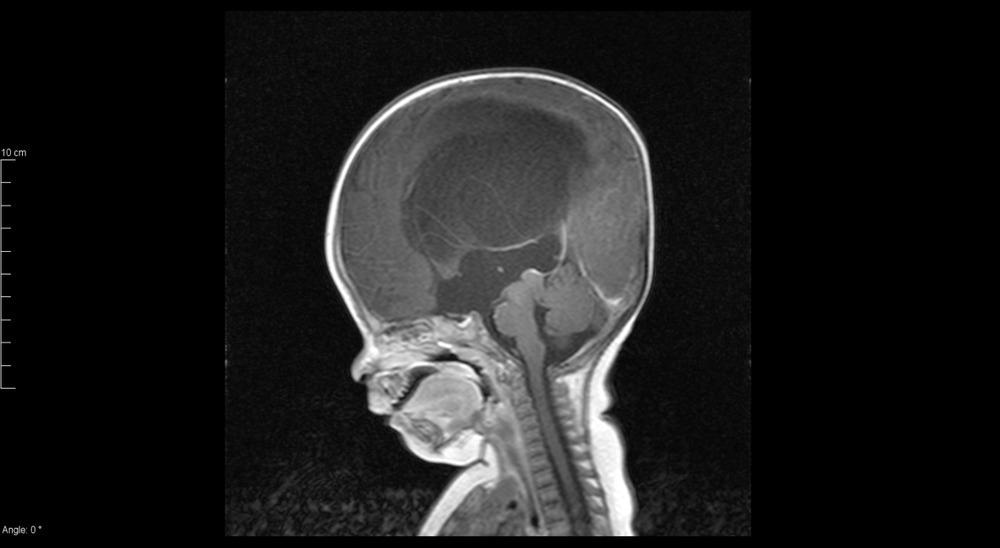The cerebral ventricles—four linked cavities of the brain that are packed with cerebrospinal fluid—become enlarged in hydrocephalus, or “water on the brain;” however, the cause is unknown in many instances. Improved therapies for hydrocephalus, which is the main cause of brain surgery in children and is linked to neurodevelopmental impairment, could result from a deeper understanding.

Image Credit: O_Akira/Shutterstock.com
A team led by researchers from Massachusetts General Hospital (MGH) and Yale University looked into changes in genetic sequences and gene expression profiles in the brains of patients with congenital hydrocephalus to gain insight. The findings, which were published in Nature Neuroscience, suggest that hydrocephalus is caused by primitive cells in the brain not behaving properly throughout development, rather than a problem with cerebrospinal fluid “plumbing.”
Constant collection of fluid dilates the cerebral ventricles, adds pressure on the skull, and strains the adjacent brain structure in patients with hydrocephalus. This compression might result in immediate symptoms including vomiting and headaches, as well as coma or death. Even when a piece of equipment called a shunt is surgically implanted in the brain, long-term brain compression can cause neurocognitive difficulties and neurodevelopmental disorders in children.
Neurosurgical shunting of cerebrospinal fluid addresses some consequences of the disease but does not target the underlying mechanisms. Knowing the molecular cause of disease could be very helpful towards clinical decision making.”
Kristopher T. Kahle, MD, PhD, Study Senior Author and Director, Pediatric Neurosurgery, Massachusetts General Hospital
Kahle was also the director of the Harvard Center for Hydrocephalus and Neurodevelopmental.
To gain insight, Kahle and his colleagues used a profiling approach that detects gene abnormalities in patients throughout the entire genome to genetically sequence cells from 483 children with hydrocephalus and their healthy parents.
The team discovered that several hydrocephalus-associated genes collide in neuroepithelial cells, which have been the first stem cells in the brain that emerge during the first few weeks of growth, rather than in fluid circulation parts, by integrating genetic sequence data with gene expression data. Such cells go on to produce all of the brain’s neurons and support cells.
This began to hint to us that rather than affecting fluid circulation, hydrocephalus gene mutations may be disrupting the earliest processes of human brain development to cause hydrocephalus.”
Phan Q. Duy, Study Co-Lead Author and MD/PhD Student, Yale University School of Medicine
TRIM71, the most commonly altered gene among the study’s participants, stands for a protein that is part of a system, which controls stem cell development time. When the researchers produced mice with TRIM71 mutations, the mice acquired fetal-onset hydrocephalus in the same way as humans do.
The Trim71-mutated mice’s brain stem cells preemptively produced neurons, resulting in an inadequate pool of stem cells to sustain brain development and progress. This resulted in a lack of brain tissue enlargement and cerebral cortex deprivation.
According to the researchers, the brain’s changed structure is unable to withstand the pressure imposed by cerebrospinal fluid, causing the brain to distort and its ventricles to passively enlarge. “The site of pathology is therefore not happening in the fluid itself, but rather the vessel—or the brain tissue—that’s holding the fluid,” says Duy.
The results indicate that therapy for hydrocephalus should include more than just removing the fluid from the brain.
A more nuanced treatment approach may include not only cerebrospinal fluid diversion but also other approaches more tailored towards improving neurodevelopmental function. In the long-term, with continued gene discovery and a better understanding of how other gene mutations disrupt brain development to cause hydrocephalus, we may be able to develop drug treatments or even gene therapy to correct the gene mutations months before the birth of patients.”
Kristopher T. Kahle, MD, PhD, Study Senior Author and Director, Pediatric Neurosurgery, Massachusetts General Hospital
This research could lead to new insights into certain pediatric brain illnesses, in contrast to a better knowledge of hydrocephalus. Many of the activities connected to hydrocephalus could also be significant for other structural brain defects, as ventricular dilation is a prominent aspect in developmental neuropsychiatric illnesses like autism and schizophrenia.
Source:
Journal reference:
Duy, P. Q., et al. (2022) Impaired neurogenesis alters brain biomechanics in a neuroprogenitor-based genetic subtype of congenital hydrocephalus. Nature Neuroscience. doi.org/10.1038/s41593-022-01043-3.